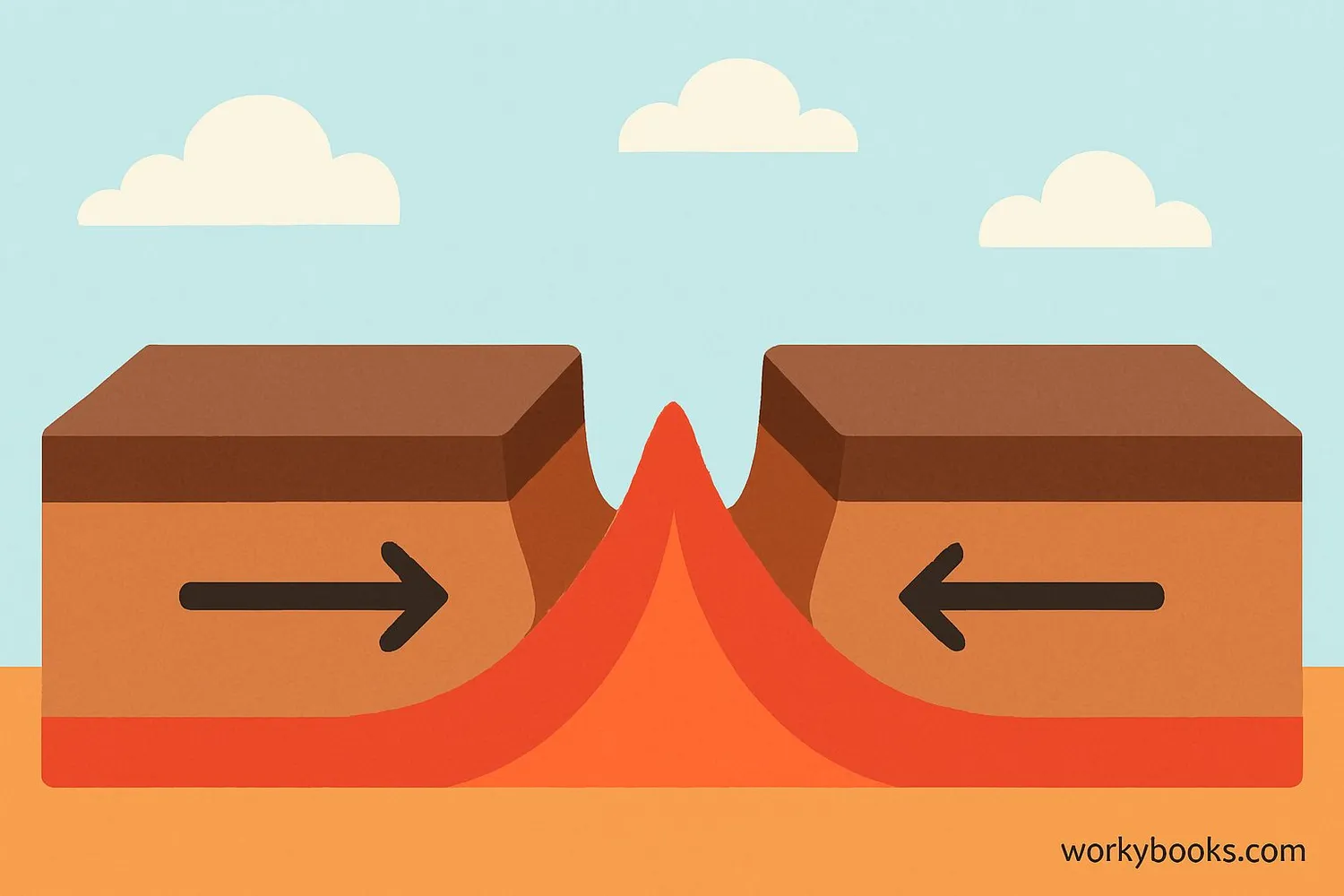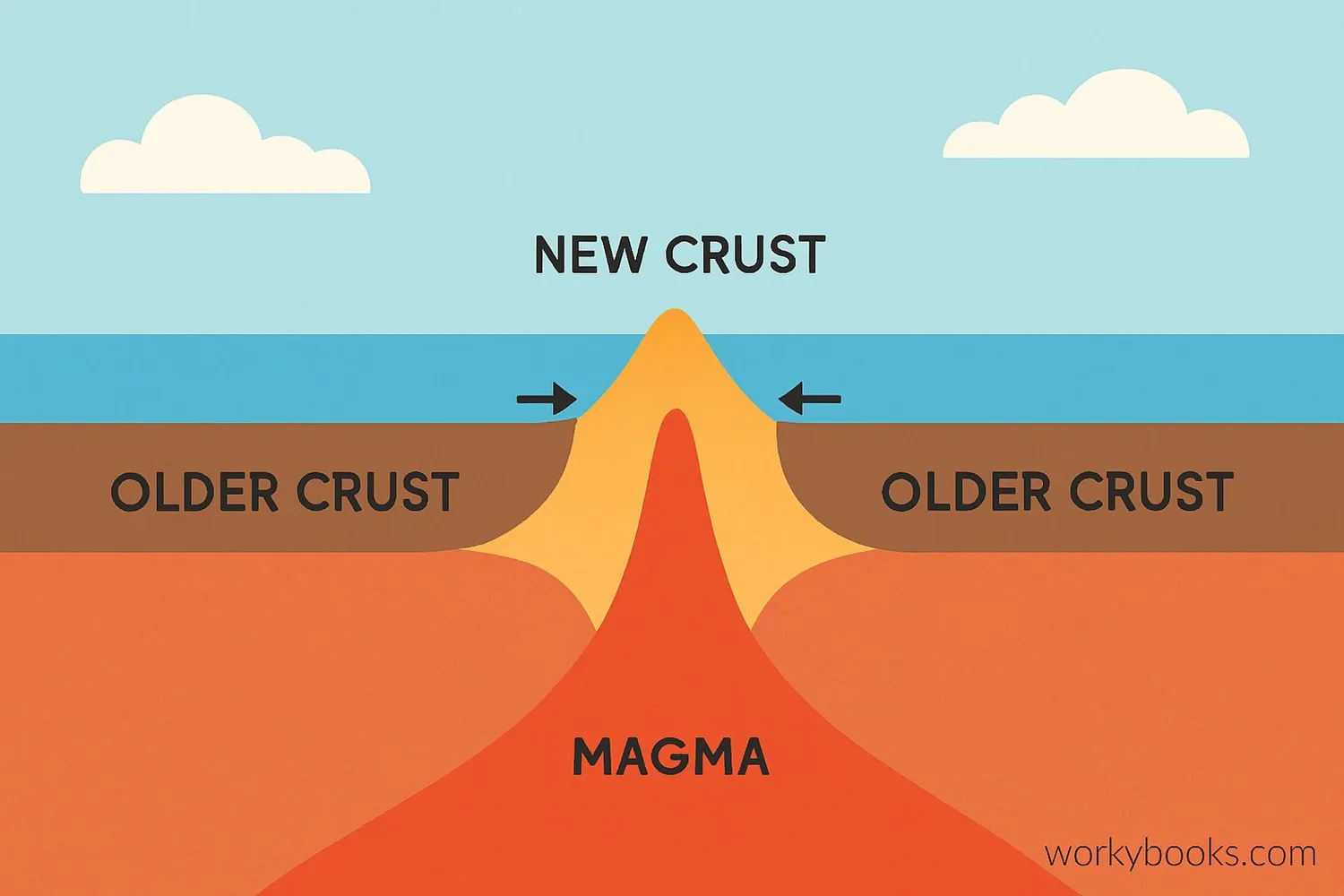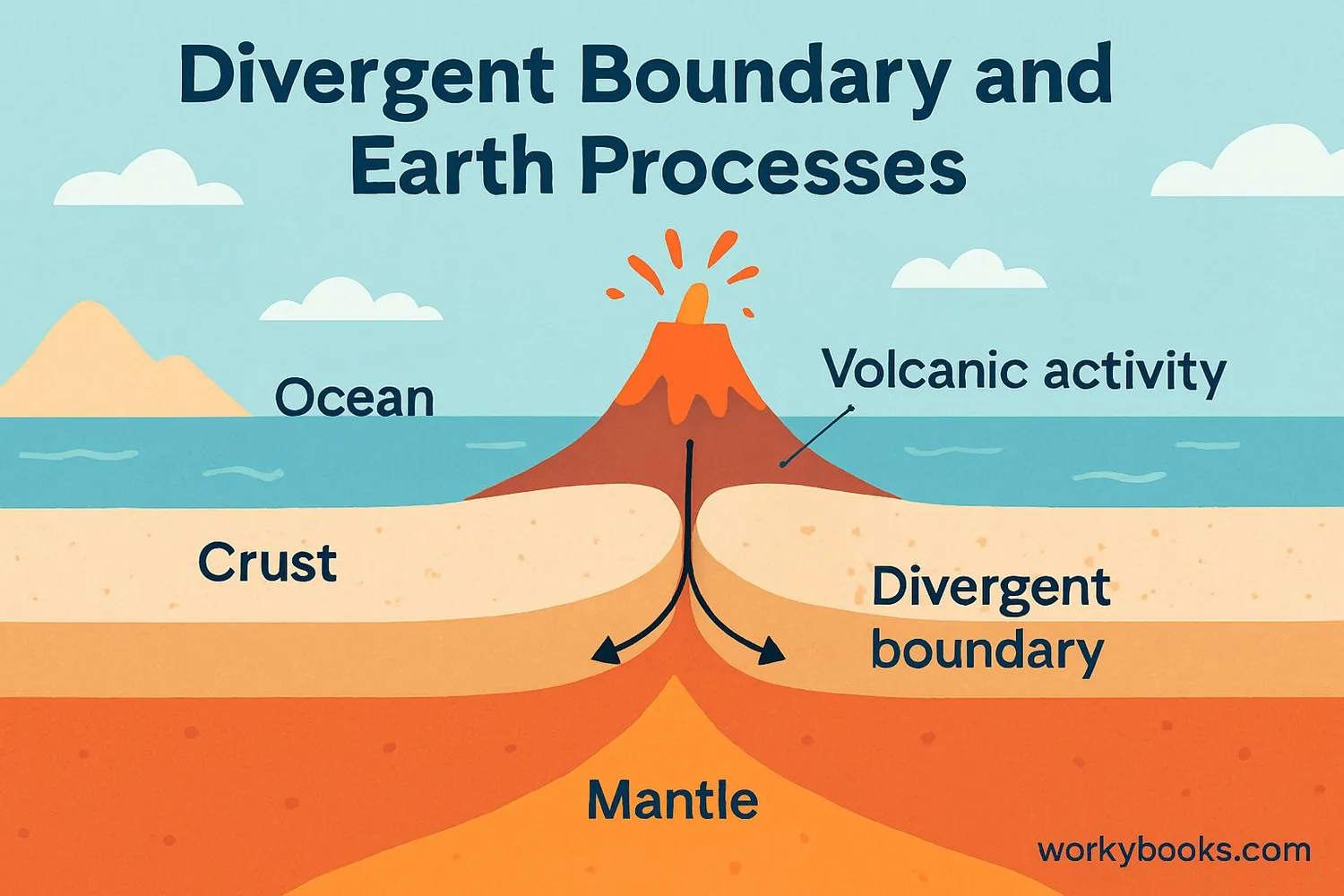Divergent Plate Boundaries - Definition, Examples, Quiz, FAQ, Trivia
Discover how Earth's surface grows at the seams where plates move apart
What are Divergent Plate Boundaries?

Divergent plate boundaries are places where Earth's tectonic plates move away from each other. Think of them as giant seams where our planet is slowly growing!
These boundaries are like Earth's construction zones. When plates pull apart, magma (hot molten rock) rises from deep within the Earth to fill the gap. As this magma cools and hardens, it creates new crust - either on the ocean floor or on land.
The process of creating new crust at these boundaries is called seafloor spreading when it happens under oceans, and continental rifting when it happens on continents.
Key Term: Tectonic Plates
Earth's surface is broken into about 15 large pieces called tectonic plates. These plates float on Earth's mantle and slowly move around.
How Divergent Boundaries Work

The process at divergent boundaries happens in several steps:
Plates Pull Apart
Tectonic plates move away from each other
Magma Rises
Magma from the mantle rises to fill the gap
New Crust Forms
Magma cools and hardens into new crust
Rift Valley Forms
On land, a valley forms between separating plates
Ocean Basin Grows
Under oceans, the seafloor expands outward
The speed at which plates move apart varies. Some boundaries spread slowly (less than 1 inch per year), while others spread faster (up to 8 inches per year). That's about as fast as your fingernails grow!
The most famous type of divergent boundary is the mid-ocean ridge, an underwater mountain range that winds through all the world's oceans like the seam on a baseball.
Earth's Longest Mountain Range
The Mid-Atlantic Ridge is the longest mountain range on Earth, stretching over 40,000 miles around the globe - mostly underwater!
Real World Examples

Divergent boundaries exist both under oceans and on continents. Here are some famous examples:
Mid-Atlantic Ridge
Underwater mountain range dividing the Atlantic Ocean, where North American and Eurasian plates move apart
East Pacific Rise
Fast-spreading ridge in the Pacific Ocean creating new seafloor
East African Rift
Continental rift valley where Africa is slowly splitting into two continents
The East African Rift is a particularly interesting example because it shows what happens when divergent boundaries form on land. In this region:
• The land is stretching and thinning
• Volcanoes form along the rift
• Deep valleys and lakes have formed
• Eventually, ocean water may flood the rift
This process shows how divergent boundaries can create new oceans over millions of years. The Red Sea was formed by a similar process that started about 30 million years ago!
Why Divergent Boundaries Matter

Divergent boundaries play several crucial roles in shaping our planet:
Crust Recycling
Create new crust while old crust is destroyed elsewhere
Ocean Formation
Create new ocean basins over millions of years
Volcanic Activity
Produce undersea volcanoes and volcanic islands
These boundaries also:
• Influence ocean currents by creating underwater mountains
• Release heat from Earth's interior
• Create mineral-rich environments that support unique ecosystems
• Provide scientists with clues about Earth's interior
Without divergent boundaries, Earth would be a very different planet! They help regulate our planet's temperature and are essential for the rock cycle that continuously renews Earth's surface.
Plate Boundaries Quiz
Test your knowledge about divergent plate boundaries with this quiz! Answer all 5 questions to see how much you've learned.
Frequently Asked Questions
Here are answers to common questions about divergent plate boundaries:
Amazing Plate Boundary Facts
Discover some fascinating facts about divergent boundaries and plate tectonics:
Earth's Largest Feature
The global mid-ocean ridge system is the longest mountain range on Earth, stretching over 40,000 miles around the planet - that's long enough to circle the Moon six times!
Slow but Powerful
Though plates move slowly (just inches per year), over millions of years they can move thousands of miles. The Atlantic Ocean was created by divergence and continues to widen by about 1 inch per year.
Unique Ecosystems
Hydrothermal vents at mid-ocean ridges support amazing ecosystems with creatures that don't need sunlight, surviving on chemicals from Earth's interior through chemosynthesis.
Not Just on Earth
Evidence of divergent boundaries has been found on other worlds! Mars has Valles Marineris, a giant canyon system that may have formed through processes similar to continental rifting on Earth.


